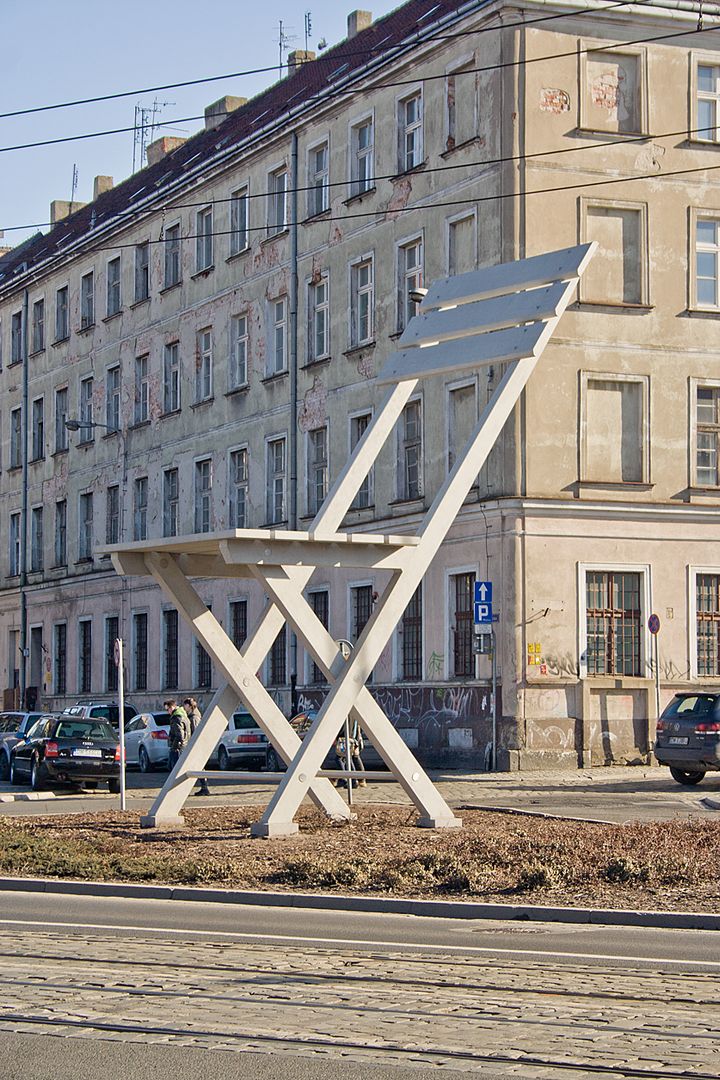Chair
6.54

Overview
A sculpture by Tadeusz Kantor, taking the form of a nine-meter-high chair made of smooth concrete, stands at the intersection of Rzeźnicza Street and Nowy Świat in Wrocław. The chair, modeled after a traditional folding garden chair, was intended to blend into urban life, in line with Kantor's philosophy—he called his sculpture an "impossible monument." The artwork is part of the projects prepared for the Wrocław '70 Art Symposium, but its realization was delayed until 2011, despite earlier promises from the authorities. It was finally installed on August 11, 2011, following the artist's original sketch, in collaboration with architect Tomasz Myczkowski and Dorota Krakowska, the copyright heir of Kantor. The sculpture was produced by the company Max Bögl at a cost of 200,000 złoty. Unlike the Wrocław chair, which has become a distinctive urban landmark, there is also an almost identical sculpture installed in Hucisko, which more accurately replicates the texture of wood, is taller, and has a more delicate structure. This project combines architectural, artistic, and cultural elements, fitting into the context of Wrocław's contemporary art and the activation of public space. Interestingly, despite its size, the sculpture aims to encourage reflection on everyday life and human interactions with the environment.
Location
Tickets
Powered by GetYourGuide
2025 Wizytor | All Rights Reserved